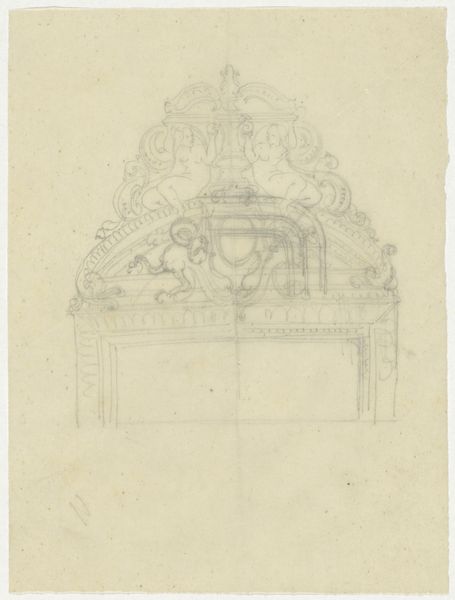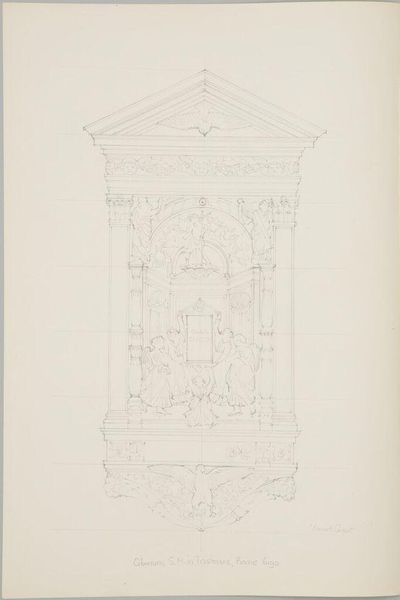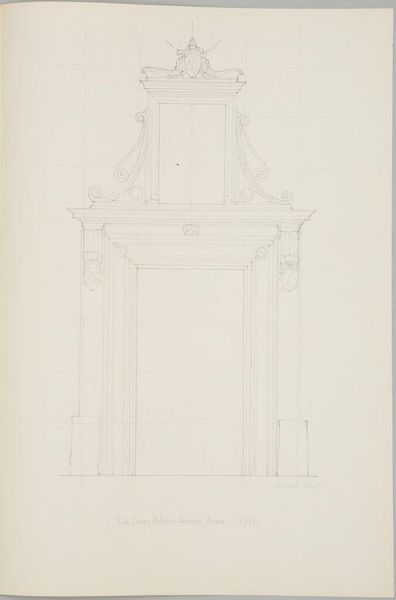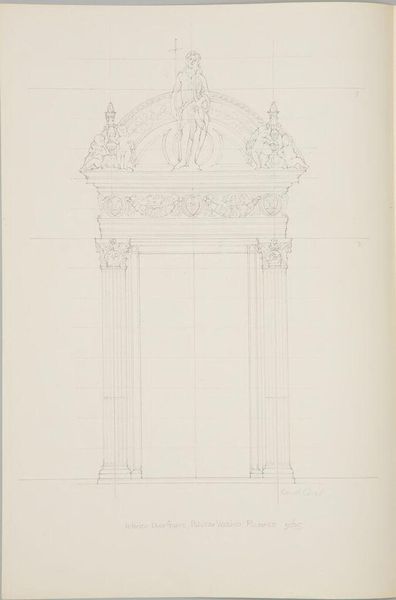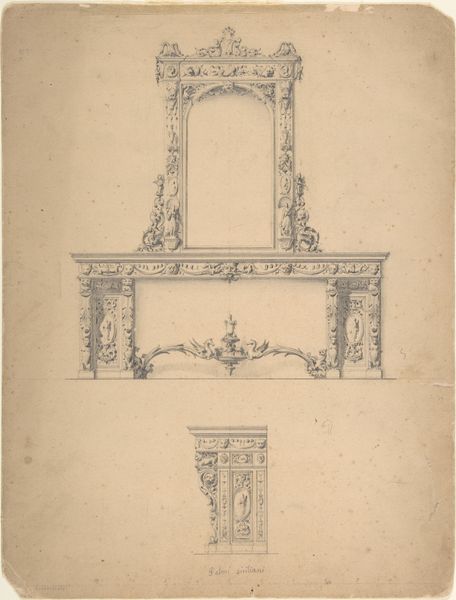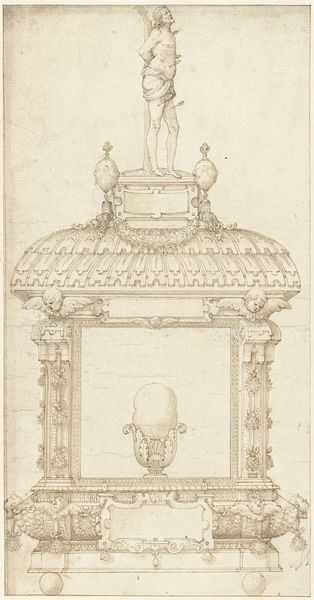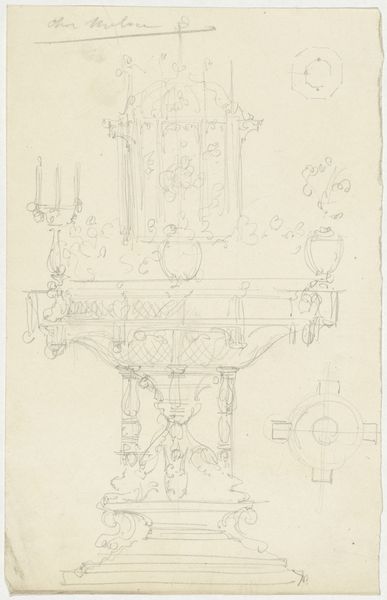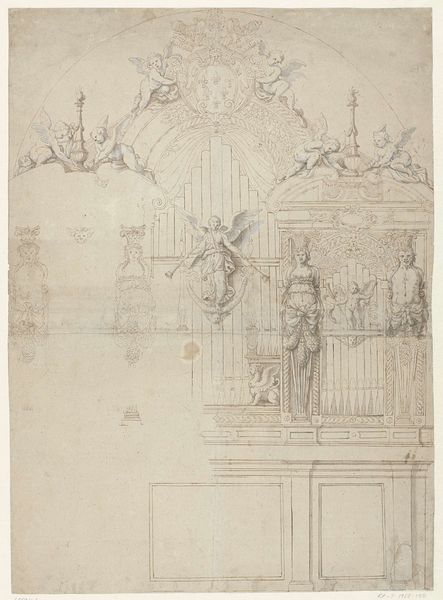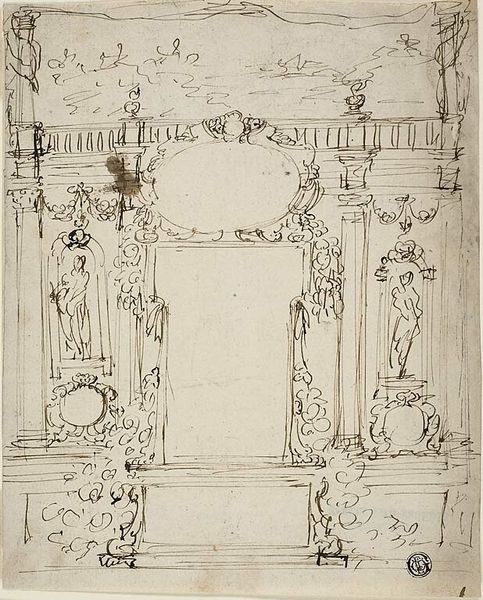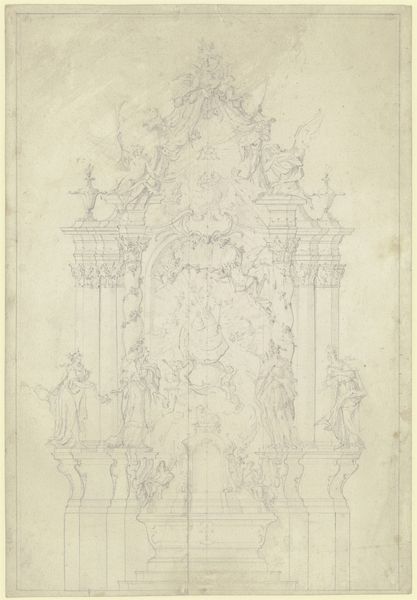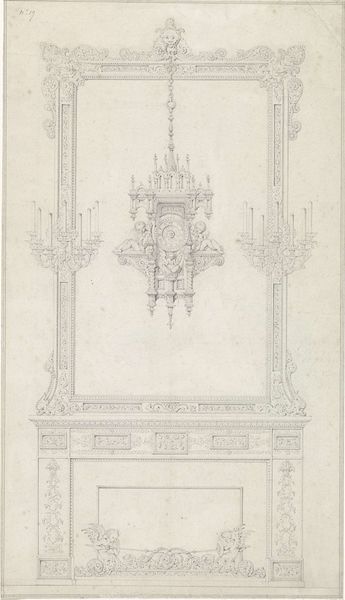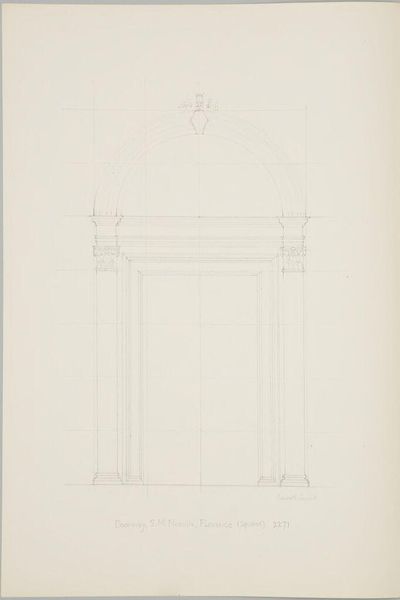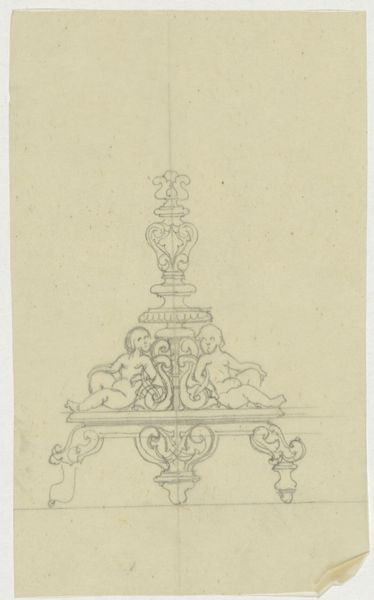
Udkast til en drejet opsats med dronning Juliane Maries initialer 1755
0:00
0:00
drawing, pencil
#
drawing
#
baroque
#
etching
#
pencil
Dimensions: 412 mm (height) x 210 mm (width) (bladmaal)
Curator: This pencil drawing from 1755 is titled, "Udkast til en drejet opsats med dronning Juliane Maries initialer," which translates to "Draft for a turned centerpiece with Queen Juliane Marie's initials," created by Lorenz Spengler. What strikes you about it? Editor: Well, first off, it feels like a ghostly apparition! It's all delicate lines and faint suggestions, more of an idea than a fully realized thing. The ornate details hint at luxury, but the medium, just pencil on paper, speaks to a functional purpose. Curator: Indeed. Spengler was a skilled turner and this piece gives us insight into the labor involved in crafting such an ornate centerpiece for a royal figure like Queen Juliane Marie. Notice the emphasis on symmetry and the layering of elements. This points toward the values upheld at court during this time. The inclusion of her initials reinforces the concept of dynastic legacy. Editor: And what about the material itself, presumably wood? I wonder how the choice of material impacted its creation, the actual labour process. You can see how the design lends itself to being worked on a lathe, repeated forms gradually building into the final creation. It shows a consciousness for craft; not every part could be the same when material is considered. Curator: Precisely! The drawing can be seen as a reflection of baroque aesthetics combined with a utilitarian blueprint. One can investigate the political climate that allows for and influences this type of design in the first place. Considering that monarchy, class and identity are inseparable during this time period. Editor: That's a critical point. This object’s materiality makes me wonder what table it ended up on. Its location and the power associated with it. I also appreciate this piece challenges the idea that sketches can be devalued versus "fine" art. This drawing serves an explicit purpose in terms of creation. Curator: Right, and by viewing the art in relation to its social and political impact, it can shed a different light. Ultimately, Spengler's draft shows us that the process and its end product represent the aesthetic desires, the economic capabilities and cultural context of the monarchy during that era. Editor: Agreed. Seeing the hand of the artist – or the craftsman here—makes me think differently about the completed artifact itself.
Comments
No comments
Be the first to comment and join the conversation on the ultimate creative platform.
